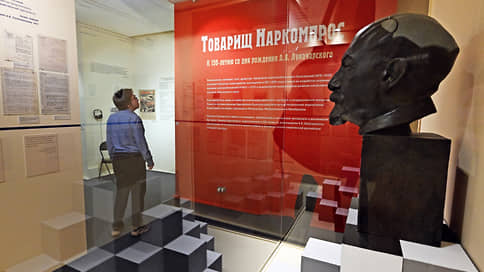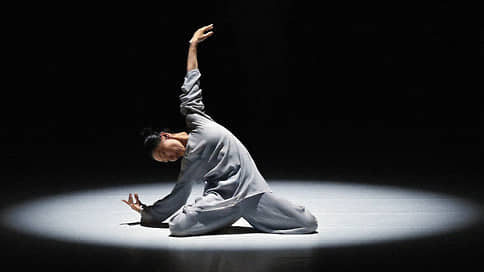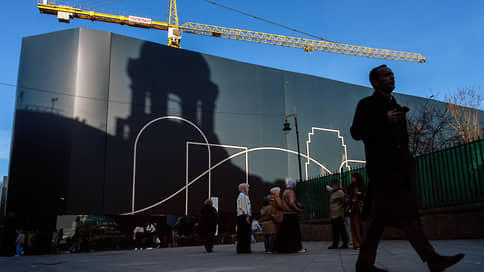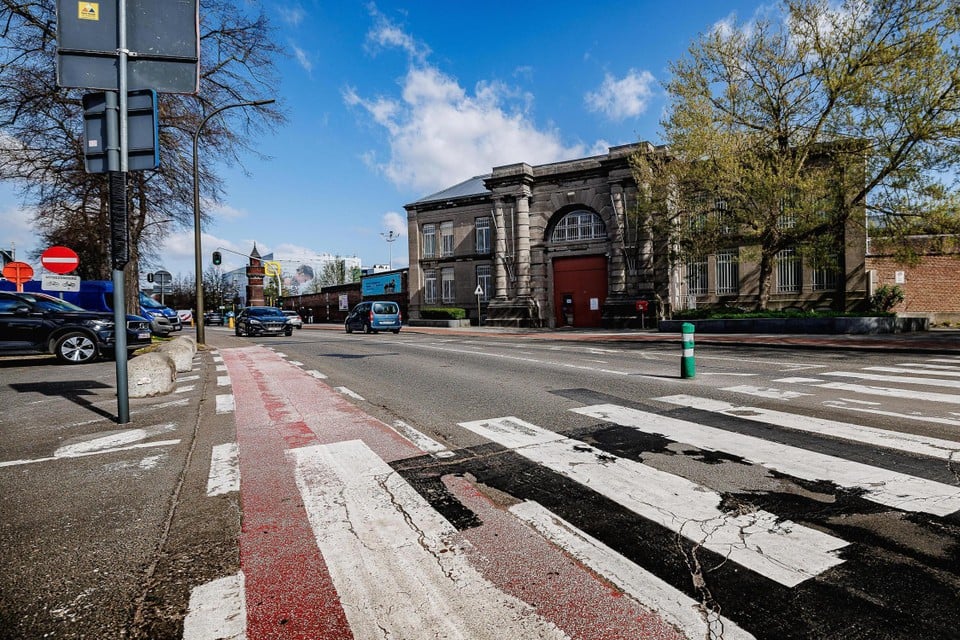how the People’s Commissar affected the culture of the twenties

In the State Museum of the History of Russian Literature, the exhibition “Comrade People’s Commissariat!” Is held, dedicated to the 150th anniversary of the birth of the First Soviet People’s Commissar Anatoly Lunacharsky. Tells Alexey Mokrousov.
When you see an abundance of posters and a posting at the exhibition about Anatoly Vasilievich Lunacharsky (1875–1933), you think that this is just a surroundings of the era. But no, at every name of the People’s Commissar, these are all his lectures and evenings with his participation. There are a lot of words at the exhibition in general, it successfully combines texts with visual (an Anna Kolyichuk design convenient for the visitor).
One could call her “thousands of people of the same People’s Commissar” – the figure of the most unusual among the first Soviet ministers was so diverse. A native of Poltava, exiled in Vorkuta, a lecturer in Paris, a resident of Geneva; The intellectual, critic, playwright, writer, official, cinema, performer of many more social and cultural roles, friend of Lenin and philosopher Bogdanov, lover of ballerin, siberite and workaholic. Lunacharsky’s diary reminded of many cases, from countless meetings and the signing of tons of papers to the creation of books and articles, from the opening of the exhibition in the Tretyakov Gallery to the introductory word at the Bayanist evening in the Column Hall. And you also need to find time for public disputes, mistresses and reading. Lunacharsky read a lot, and, say, his thorough review of Bakhtin’s book on Dostoevsky is also interesting today.
The exhibition takes place in a museum, whose current abbreviated name-Gmirli, the State Museum of the History of Russian Literature-recalls the monstrous abbreviations of the 1920s; The former, Goslitmusey, was more humane in every sense of the word. It was in the 20th that the glory of Lunacharsky knew no boundaries, few could compete in the country with its ability to influence the course of cultural and political life.
Despite the God-seeking and other deviations from the canonical Marxism-Leninism-this, unfortunately, the exhibition is discussed in passing-Lunacharsky remained faithful to party discipline.
After the revolution, he acted as a buffer between the new government and the old intelligentsia, who still considered him his own, helped many, but did not try to overcome the lap.
We need to build a new life – we will, we need to raise a new person – we will educate, to forge new personnel – we’ll bite such that it will not seem enough. And still, the difference from subsequent ministers of culture does not cease to seem striking.
Of course, there were enough unkind assessments. His participation in the reconstruction of all education, censorship, carried out with the consent of the People’s Commissariat of People’s Commissariats, support for the defeat of the Academy of Sciences in 1929, the obvious narcissism annoyed many. The curators built an exhibition on the contrast of the statements “for” and “against”-the first are given in red, the latter in blue, but the conventionality of this contrast is still obvious. Even in the essay of Korney Chukovsky, the portrait of Lunacharsky is more than ambiguous.
In addition to quotes – fragments of films, including with the participation of the People’s Commissar (alas, not all of them have been preserved); Theatrical sketches, including Kustodievsky to Zamyatin’s « Bloch » – the second part of them is now exhibited on the Kustodiev retrospective in the Tretyakov Gallery; Furniture from the Lunacharsky memorial office in Konet Lane. The office itself, which has long been closed for repairs, is in a huge ten -room apartment, where the famous library of the neofilology institute was previously located. Lunacharsky evicted her so unceremoniously that he was indignant even by the All -Russian Central Executive Committee, but this did not interfere with the final solution to his housing issue. You can understand the People’s Commissar, the second wife, Natalya Rosenel, was an actress, the status demanded sacrifice, but it was not difficult to understand the indignant.
It remains to be surprised at freedom, if not the impunity with which the cartoons of the 20s treated the figure of Lunacharsky.
At the original drawing of the Kukryniks “Writers in the bath”, Lunacharsky makes a pedicure lying in the basin of Mayakovsky at the exhibition. And in the drawing of Nikolai Gatilov “The Poetry of Dreams and Prose of Reality”, the People’s Commissar acts already as a dentist. In the menagerie, where the same Mayakovsky in the image of Leo, Yuri Libedinsky was Giraffe, and Fedor Gladkov and Osip Brik sit on a branch, Lunacharsky with ticks removes his teeth to the poet Svetlov.
The ability to self -irony is not given to everyone, but Lunacharsky, who rotated among the artists who adored the draws, believed that it was inevitable for a thinking person. Perhaps that is why he did not immediately understand that the clouds were thickened when in the magazine “Art” he edited in 1929, an article appeared about the exhibition of folk art: the author described, in particular, the Lubok “Stalin and the farm laborers”, the very name of the experienced courtier. But they were not Lunacharsky – he was completely absent in Moscow at the time of delivery of the number, once again traveling around the foreign countries, and only upon returning, having seen the decision of the Central Committee on the ban on Lubka, wrote a repentant letter – they say, did not know, did not participate. But it was too late. In addition, soon there was an incress delay in the Moscow -Leningrad express. The head of the station, seeing Anatoly Vasilyevich on the platform, asked: “What are you not sitting? Going! » “I’m waiting for my wife,” the People’s Commissar answered, “she collects things.” « Ah, we will wait too. » Waited.
It seems that all the newspapers, and the caricaturists did not remain without work, and the personnel department, too: in the fall of Lunacharsky, was also written about this. The site of the not -so -honored link was the scientist of the CEC, where he was clearly bored and from where he asked for a diploma: they also show a letter to Stalin. He never reached the embassy in Madrid, died on the road, in Menton.
They buried in the Kremlin wall, but the cities in his honor were not named, only a cliff on the land of Franz Joseph in the cold Barents Sea. Collected works were only published in the 1960s, but why read it today, a question. The current exhibition is trying to answer this question – and, in essence, is not successful.








